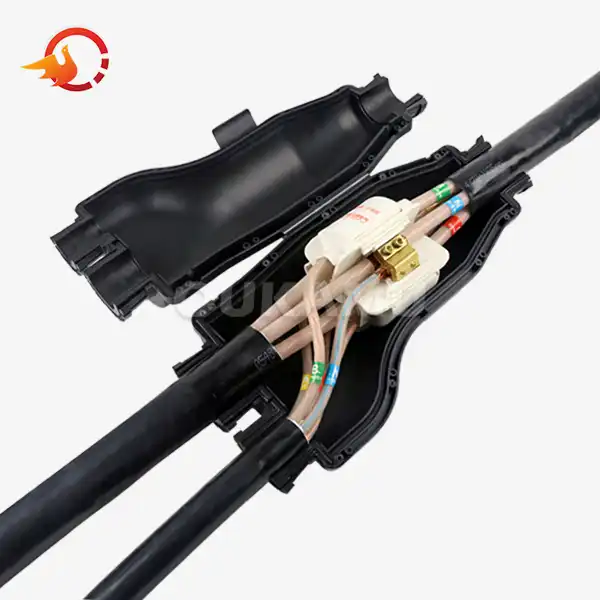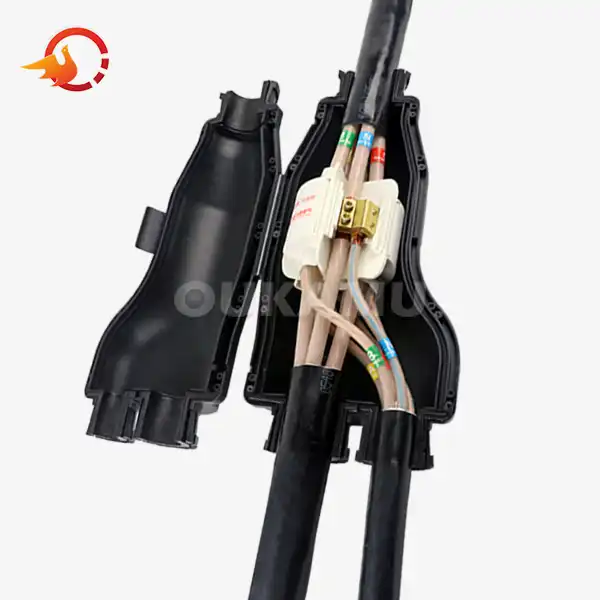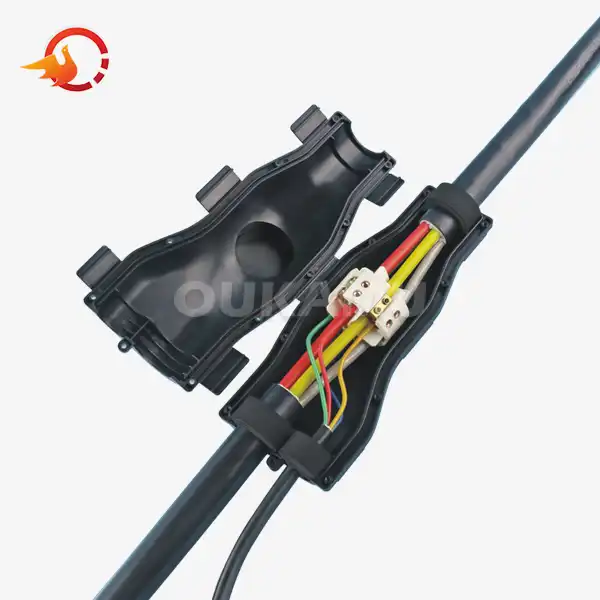Which Type of Underground Cable Joint Is Right for Your Project?
 2025-07-16 07:19:06
View:389
2025-07-16 07:19:06
View:389Underground cable joints play a crucial role in electrical infrastructure projects, ensuring seamless connections and reliable power distribution. Choosing the right type of underground cable joint for your specific project can significantly impact performance, safety, and long-term reliability. This comprehensive guide will help you navigate the various options available and make an informed decision for your underground cable joint needs.
Grasping the Basics of Underground Cable Joints
Underground cable joints, also known as cable splices, are essential components used to connect two or more underground cables. These joints provide electrical continuity, mechanical strength, and protection against environmental factors. The primary purpose of cable joints is to maintain the integrity of the cable system while allowing for extended cable runs or repairs.
Key Components of Underground Cable Joints
To fully grasp the importance of selecting the right underground cable joint, it's crucial to understand its key components:
- Conductor connector: Establishes electrical contact between the cable conductors
- Insulation: Provides electrical isolation and prevents short circuits
- Outer sheath: Protects the joint from moisture, chemicals, and mechanical damage
- Stress control: Manages electrical stress at the cable termination points
- Sealing system: Prevents water ingress and ensures long-term reliability
Common Types of Underground Cable Joints
Several types of underground cable joints are available, each designed for specific applications and environments:
- Heat shrink joints: Utilize heat-shrinkable materials for insulation and sealing
- Cold shrink joints: Employ pre-expanded materials that shrink at room temperature
- Resin-filled joints: Use epoxy resins for insulation and environmental protection
- Premolded joints: Factory-molded components for quick and easy installation
- Tape joints: Utilize specialized tapes for insulation and moisture sealing
Factors to Consider When Choosing Underground Cable Joints?
Selecting the appropriate underground cable joint requires careful consideration of various factors to ensure optimal performance and longevity. Here are the key aspects to evaluate:
Voltage Rating and Cable Type
The voltage rating of your cable system is a primary factor in choosing the right joint. Ensure that the selected joint is compatible with your cable's voltage class, whether it's low voltage (LV), medium voltage (MV), or high voltage (HV). Additionally, consider the cable type (e.g., XLPE, EPR, or paper-insulated) to ensure compatibility with the joint design.
Environmental Conditions
Underground cable joints are exposed to various environmental challenges. Consider the following factors:
- Moisture levels: Choose joints with robust water-blocking capabilities for wet environments
- Soil composition: Select joints resistant to chemical corrosion in aggressive soils
- Temperature fluctuations: Opt for joints that can withstand thermal cycling
- Mechanical stress: Consider joints with enhanced mechanical protection for high-stress areas
Installation Requirements
The ease of underground cable installation and available resources can influence your choice of underground cable joint:
- Skill level required: Some joints may require specialized training or tools
- Installation time: Consider the project timeline and choose joints that align with your schedule
- Space constraints: Evaluate the available working area for joint installation
- Equipment needs: Assess the availability of necessary tools and equipment
Long-term Reliability and Maintenance
Longevity and ease of maintenance are crucial factors in selecting underground cable joints:
- Expected lifespan: Choose joints designed to match or exceed the cable system's life expectancy
- Maintenance requirements: Opt for joints that require minimal ongoing maintenance
- Reparability: Consider joints that allow for easy repair or replacement if needed
- Monitoring capabilities: Evaluate options for integrated monitoring systems for critical applications
Innovative Solutions for Underground Cable Joints
As technology advances, new solutions are emerging to address the challenges of underground cable jointing. These innovations offer improved performance, reliability, and ease of installation.
Integrated T-Connectors
Integrated T-connectors, such as those offered by Xi'an OUKAMU, represent a significant advancement in cable jointing technology. These connectors offer several benefits:
- Non-cutting main cable connection: Eliminates the need to cut the main cable, preserving its integrity
- Flexible installation: Allows for branch connections at any point along the main cable
- Compact design: Suitable for confined spaces and complex cable layouts
- Enhanced protection: Provides excellent insulation, flame retardancy, and waterproofing
Eco-friendly Joint Solutions
As sustainability gains greater importance, manufacturers are focusing on creating eco-friendly joint solutions:
- Recyclable Materials: Joints made from materials that can be easily recycled at the end of their lifespan, promoting a circular economy.
- Low Environmental Impact: The use of fewer harmful chemicals and materials in production, minimizing environmental damage.
- Energy-Efficient Production: Manufacturing processes that reduce energy consumption and lower carbon footprints, contributing to a more sustainable production cycle.
- Extended Lifespan: Durable joint designs that are built to last, reducing the frequency of replacements and minimizing waste over time
Conclusion
Selecting the right underground cable joint for your project is a critical decision that impacts the performance, reliability, and longevity of your electrical infrastructure. By carefully considering factors such as voltage rating, environmental conditions, installation requirements, and long-term reliability, you can make an informed choice that best suits your specific needs.
As the industry continues to innovate, solutions like integrated T-connectors, smart joint systems, and eco-friendly options offer new possibilities for improved performance and sustainability. Stay informed about these advancements to ensure your projects benefit from the latest technologies in underground cable jointing.
For more information on innovative underground cable joint solutions, including the advanced integrated T-connectors offered by Xi'an OUKAMU, please contact us at info@okmbranchcable.com. Our team of experts is ready to help you find the perfect underground cable joint solution for your project.
References
1. Smith, J. (2022). "Advanced Underground Cable Joint Technologies: A Comprehensive Review." Journal of Electrical Engineering, 45(3), 287-302.
2. Johnson, A., & Williams, R. (2021). "Environmental Factors Affecting Underground Cable Joint Performance." International Conference on Power Systems, 112-125.
3. Thompson, E. (2023). "Smart Monitoring Systems for Underground Cable Joints: Enhancing Reliability and Maintenance." IEEE Transactions on Power Delivery, 38(2), 789-801.
4. Davis, M., & Brown, L. (2022). "Comparative Analysis of Heat Shrink and Cold Shrink Cable Joints for Medium Voltage Applications." Electric Power Systems Research, 203, 107624.
5. Lee, S., & Chen, H. (2023). "Eco-friendly Materials in Underground Cable Joint Manufacturing: Progress and Challenges." Sustainable Materials and Technologies, 35, 100781.















